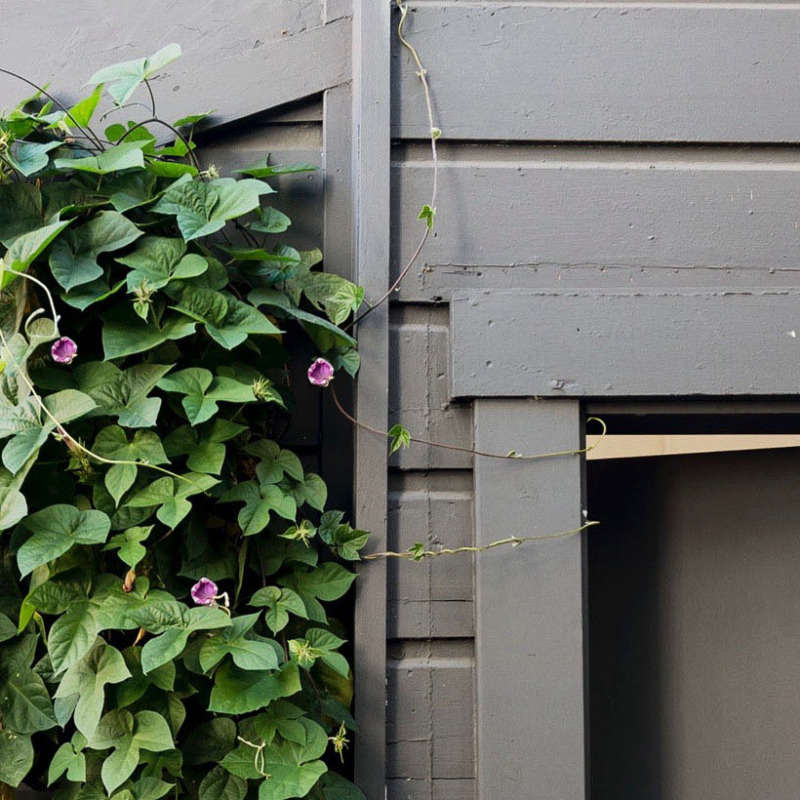

Morning glory vine has handsome heart-shaped leaves and delicate trumpet flowers and is easy to grow (reaching heights of up to 15 feet in a single season). Use it to mask a trouble spot in the garden—such as an unsightly fence or wall—and prevent it from turning into an invasive pest (deadhead flowers before it sets seed pods).
Morning glory vines can grow as much as 15 feet in a season, to blanket an ugly fence, wall, or telephone pole. In addition to the purple cultivars everyone thinks of when they think of morning glory, the vines’ trumpet-shaped flowers can bloom in many shades of pink, blue, white, red—as well as variegated combinations.
Some of our favorite varieties are Ipomoea tricolor ‘Heavenly Blue’ (“a classic heirloom that produces sky blue flowers with white centers,” writes our contributor Jeanne Rostaing; Ipomoea nil ‘Scarlett O’Hara’ with red flowers that attract hummingbirds, and I. alba ‘Giant White’ with perfumed white flowers that open in the early evening.
Tip: Purple morning glory (Ipomoea purpurea) has a reputation for escaping from gardens to naturalize all across the U.S.; other species are also considered invasive in some areas. Prevent it from self-seeding by deadheading flowers after they bloom. Remove the entire plant after the first frost kills it (as if it were a weed) and bag it for removal instead of putting the vines into the compost bin.
v5.0
When you register as a free Member of the Remodelista family of websites (Remodelista, Gardenista, and The Organized Home), you gain access to all current posts plus 10 archived posts per month, our internal bookmarking tool, and the community bulletin board.
Member benefits include:
For $5/month ($59.99 paid annually) you'll enjoy unlimited, ad-free access to Remodelista, Gardenista, and The Organized Home and all the benefits of Membership.
Subscriber benefits include:
For $5/month ($59.99 paid annually) you'll enjoy unlimited, ad-free access to Remodelista, Gardenista, and The Organized Home and all the benefits of Membership.
Subscriber benefits include:
Benefits include:
For $5/month ($59.99 paid annually) you'll enjoy unlimited, ad-free access to Remodelista, Gardenista, and The Organized Home and all the benefits of Membership.
Subscriber benefits include:
When you register as a free Member of the Remodelista family of websites (Remodelista, Gardenista, and The Organized Home), you gain access to all current posts plus 10 archived posts per month, our internal bookmarking tool, and the community bulletin board.
Member benefits include:
If at any time you want to become a Subscriber and enjoy unlimited, ad-free access to all our content, just go to the My Account link and choose Subscribe.
Advertising funds our work at Gardenista and helps us provide you with a daily dose of garden inspiration & design. We hope you’ll consider disabling your adblocker for Gardenista so we can continue our mission: a well-designed garden for all.
Thank you for your support.